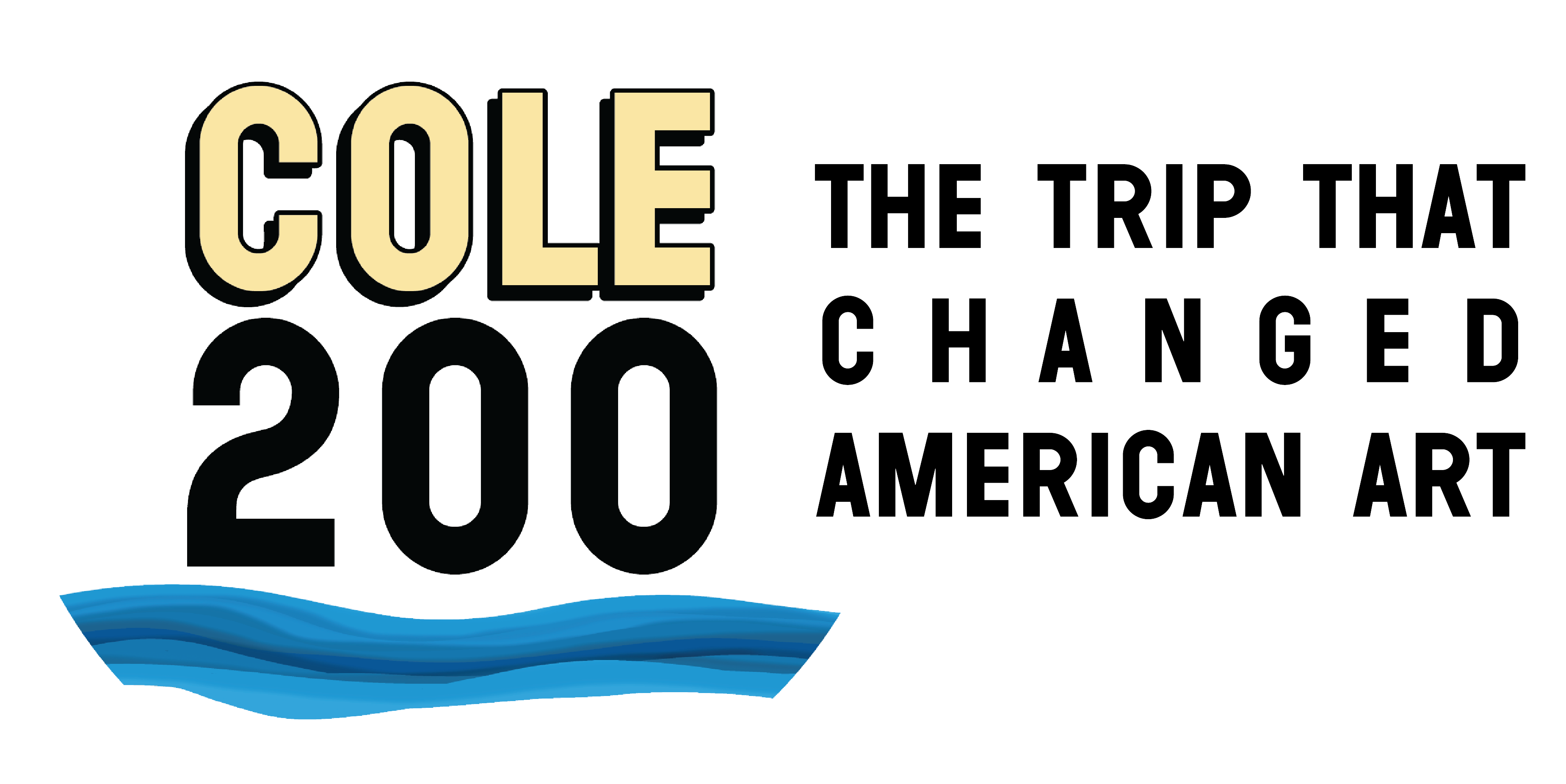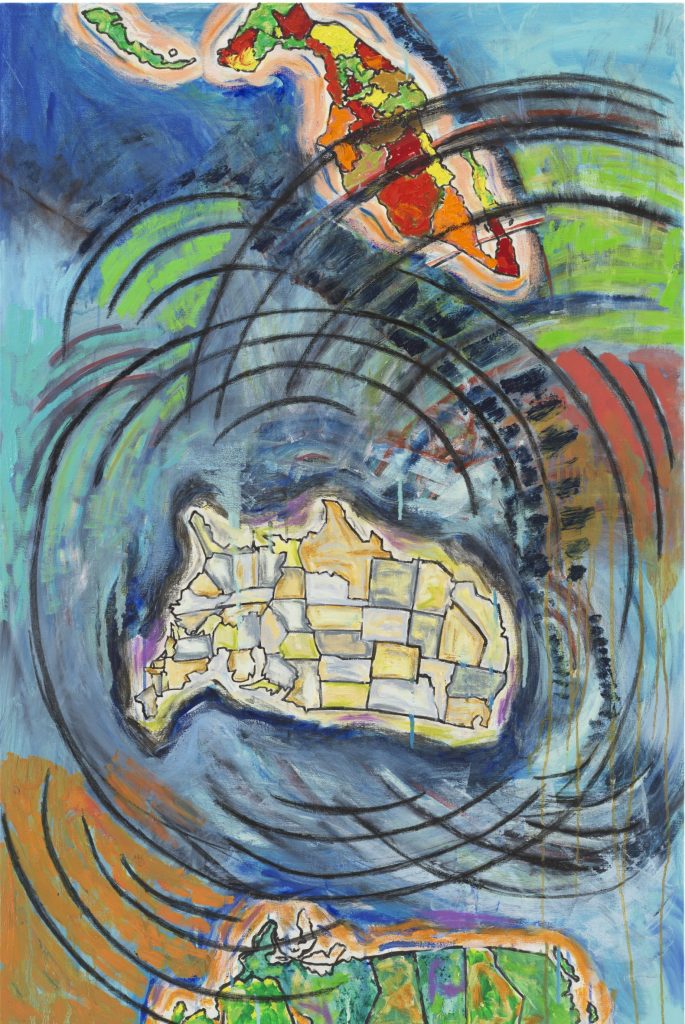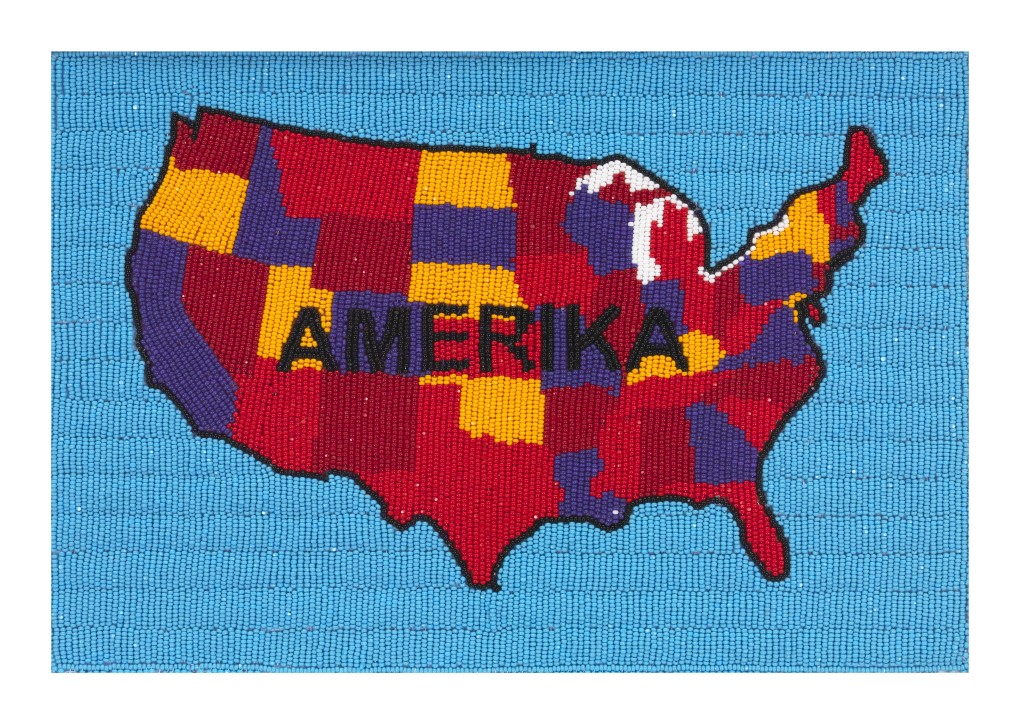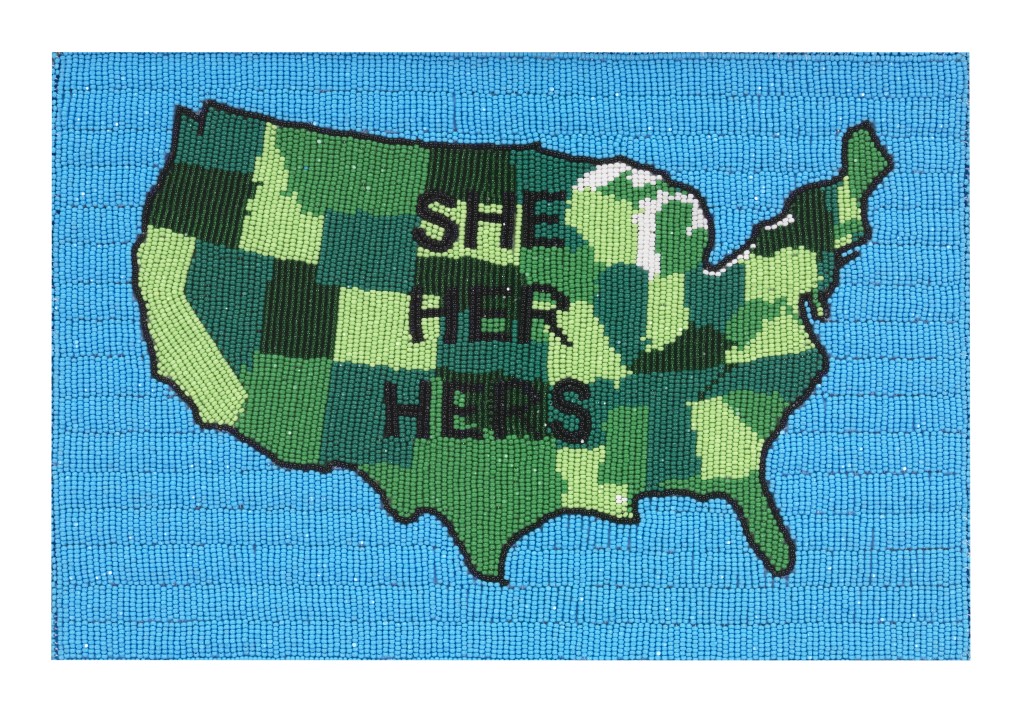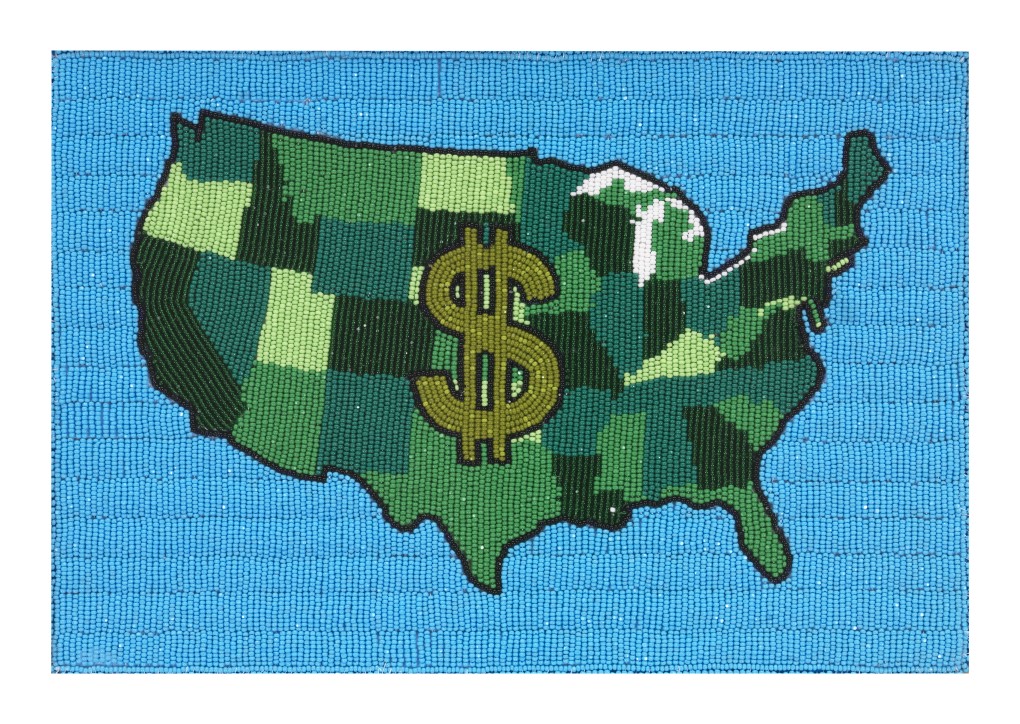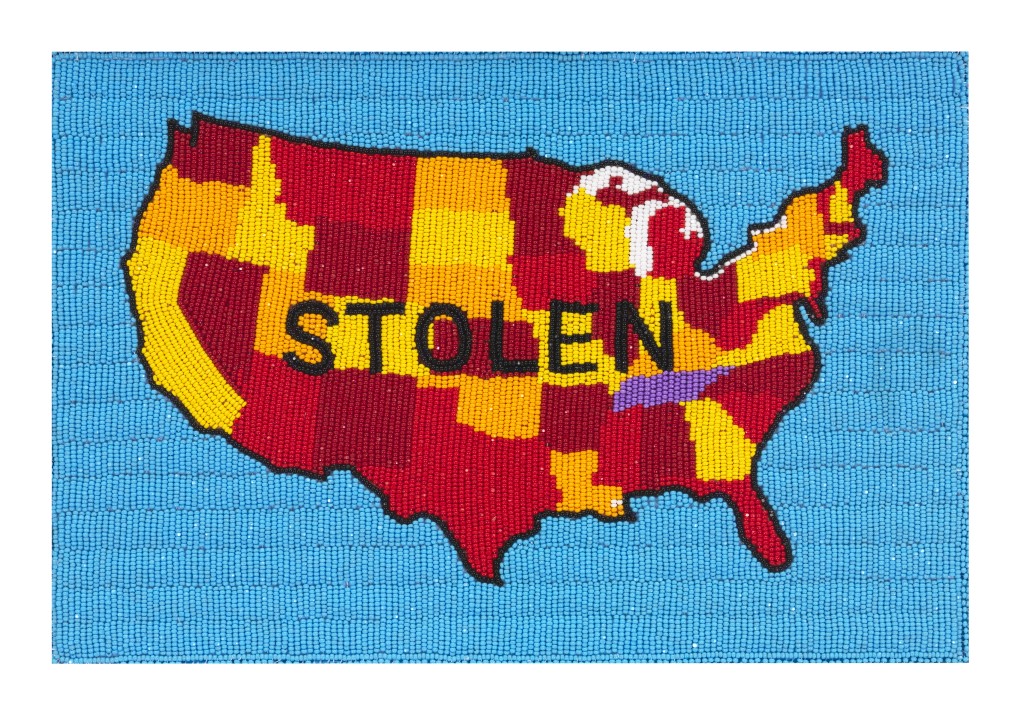Jaune Quick-to-See Smith
Jaune Quick-to-See Smith, Unhinged (Map), 2018, mixed media on canvas, 60×40 in., Courtesy the artist and Garth Greenan Gallery, New York, NY
An enrolled Salish member of the Confederated Salish and Kootenai Nation, Jaune Quick-to-See Smith works across painting, printmaking, and mixed media. Smith often creates narrative landscapes that pay homage to Indigenous history, culture, and activism while confronting settler-colonial violence committed against Native communities and the environment.
How is Unhinged (Map) different than the map of the United States that you are accustomed to seeing?
Among other things, Smith upturns the map of the United States, so Canada appears at the bottom, and Mexico at the top. Through the simple rotation, which also calls attention to Christopher Columbus’s navigational errors in sailing to India that resulted in his landing in the Caribbean, Smith notes that the map becomes a “thing of Indian power.” This work asserts that maps are not reflections of land, but of power. Maps are constructions drawn by those in power to create political borders, justify settler-colonial expansion, and justify land theft from the Indigenous inhabitants on Turtle Island, the original name for the land now labeled North America. Jaune’s maps seek to geographically disorient and disrupt these historical projects of land demarcation and seizure.
Jaune Quick-to-See Smith, She, Her, Hers Map / Amerika Map / Stolen Map / $ Map, 2021, Beads, Courtesy the artist and Garth Greenan Gallery, New York, NY
An enrolled Salish member of the Confederated Salish and Kootenai Nation, Jaune Quick-to-See Smith works across painting, printmaking, and mixed media. Smith often creates narrative landscapes that pay homage to Indigenous history, culture, and activism while confronting settler-colonial violence committed against Native communities and the environment. In a group of map works made of colored beads, the artist emblazons titles and symbols across the United States map. How do these words recenter a more accurate narrative of the United States? Who owns the land and who has the power to name it? With these works, Smith sparks critical questions and connections amongst land theft, womanhood, racism, and the ongoing and often violent commodification of land.
JAUNE QUICK-TO-SEE SMITH (b. 1940) was raised in St. Ignatius Indian Mission and is an enrolled Salish member of the Confederated Salish and Kootenai Nation, Montana. Smith received an Associate of Arts Degree at Olympic College in Bremerton, WA in 1960, a BA in Art Education from Framingham State College, MA in 1976, and an MA in Visual Arts from the University of New Mexico in 1980. Combining appropriated imagery from commercial slogans and signage, art history, and personal narratives, Smith forges an intimate personal lexicon of developed imagery in abstract painting and prints to convey her socio-political commentary of identity. Smith has received 126 numerous awards such as the Academy of Arts and Letters Purchase Award, the Joan Mitchell Foundation Painters Grant; the Women’s Caucus for the Arts Lifetime Achievement; the College Art Association Women’s Award; election to the National Academy of Art, and the Georgia O’Keeffe Museum’s Living Artist of Distinction Award. Smith’s work is held in the collections of the Cornell Fine Arts Museum, Ithaca, NY; Museum of Modern Art, Quito, Ecuador; the Museum of Mankind, Vienna, Austria; The Walker Art Center, Minneapolis, MN; the Metropolitan Museum of Art, New York City; and the Smithsonian American Art Museum, Washington DC. Smith is represented by Garth Greenan Gallery in New York City.
